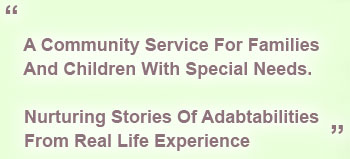Speech-Language Pathologist
- What is the difference between speech and language?
- Speech is the production of sound and the formation of words (articulation).
- Language is the combination of nonverbal behaviors and gestures, and verbal production , involving, understanding of words (receptive language), verbal expression of ideas (expressive language).
- Some children receive speech therapy for articulation (how the say the sounds), when they may also need language therapy to treat a larger communication problem.
- Where can I find a speech language therapist?
- All districts have a speech language therapist who acts as a consultant to several schools. As a parent, you can talk to your principal, special education coordinator and/or teacher, about accessing these related services.
- Speech/language services can begin at age 3 year through the developmental preschools through the school districts and continue if needed into primary and secondary education. For the 0 to 3 year olds, the Early Intervention Programs through the Utah Department of Health can accessed through the website www.utahbabywatch.org
- Other resources include in part:
- University of Utah, Utah State University and BYU Speech and Language Departments
- Primary Children’s Medical Center (PCMC)
- CSHCN
- Private (see phone book)
- What are the functions of verbal and nonverbal communication?
- What does language impact and influence?
- What are some of possible causes for language problems?
- A Speech Language Pathologist evaluates the following areas utilizing a variety of different assessment tools:
- Receptive Language looks at a child’s understanding of language. In older children this includes the processing of complex language including following directions and the understanding of grammar.
- Expressive Language evaluates what a child is actually saying. For younger children the number of words used and how many words are combined is considered. Older children are evaluated for syntax (sentence structure) and meaning.
- Articulation looks at a child’s ability to make speech sounds. Skills are evaluated in single sounds, words and connected speech.
- Voice includes the assessment of quality, nasality and intonation patterns.
- Fluency is evaluated to insure the child is not stuttering or having dysfluencies. Determinations are made if stuttering is developmental in nature or is true stuttering behavior.
- Pragmatics evaluates the child’s use of language including eye contact, turn taking, and topic maintenance.
- Speech Mechanism includes the evaluation of the lips, tongue and palate for speech purposes.
- Language Mile Stones Websites
The functions of communication are multiple for expressing hopes, needs and wants. Our desires, intentions and preferred stories can be initiated through gestures, and expressed through arts including visual arts, performing arts like dance, but for most older children it is through oral and written language. We take language for granted because it seems to be always there (although maybe not in its complete form for children with disabilities).
Language spurs childhood development and if fully charged, will give momentum to other developmental arenas that may be compromised. Basic functions of communication facilitate getting needs met by sustaining and negotiating a relationship, asking for something, requesting to get more of something, asserting oneself by asking questions, protesting something aversive, defending and coping by using self talk or asking for help.
Language is hard wired in its constitutional origins, but it is highly influenced and nurtured by the relationship with a sensitive and responsive caregiver in the social environment and can be remediated through interventions.
Language is the foundation for intelligence, reasoning, problem solving and figuring things out. Success in the school experience requires good verbal skills and is the main teaching mode requiring listening, understanding and expressing language-learned concepts.
Many of the conditions we see in our program include learning disabilities, reading/spelling and writing problems. Some children with verbal dyspraxia (motor word planning challenges) and Pragmatic language challenges can impede social learning and mood regulation, as seen in autism and these all impinge upon having good language skills.
Genetics, syndromes, chronic hearing loss from early in life ear infections, accidents, high stress, trauma, social isolation, lack of stimulation—not being talked to.








Social Networks
Follow Us